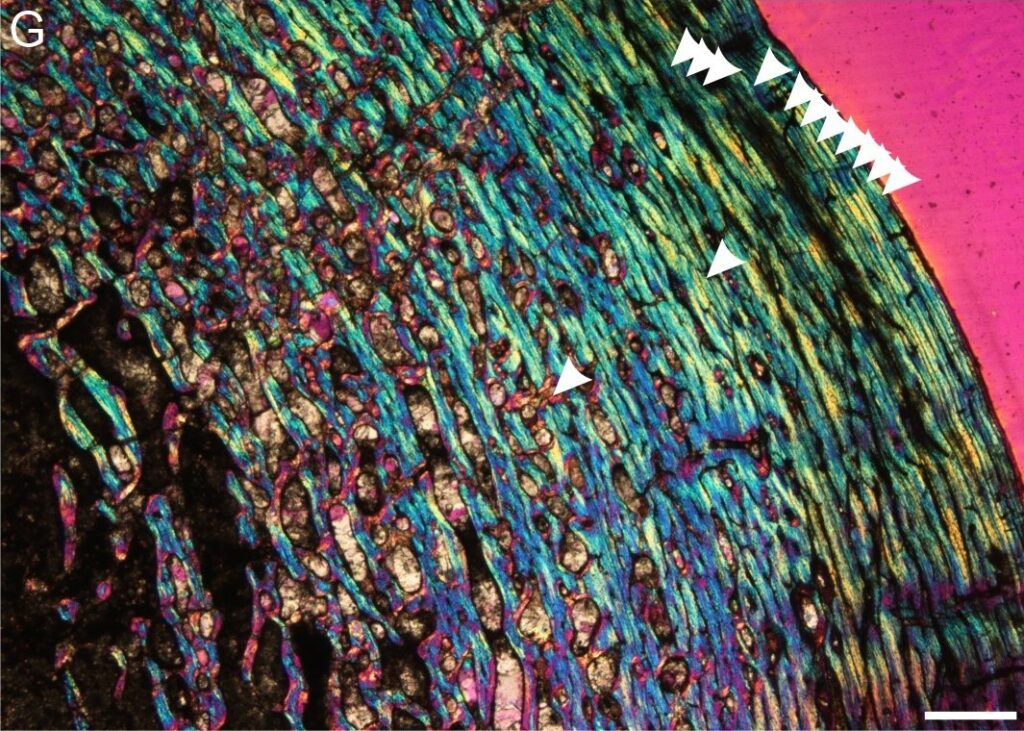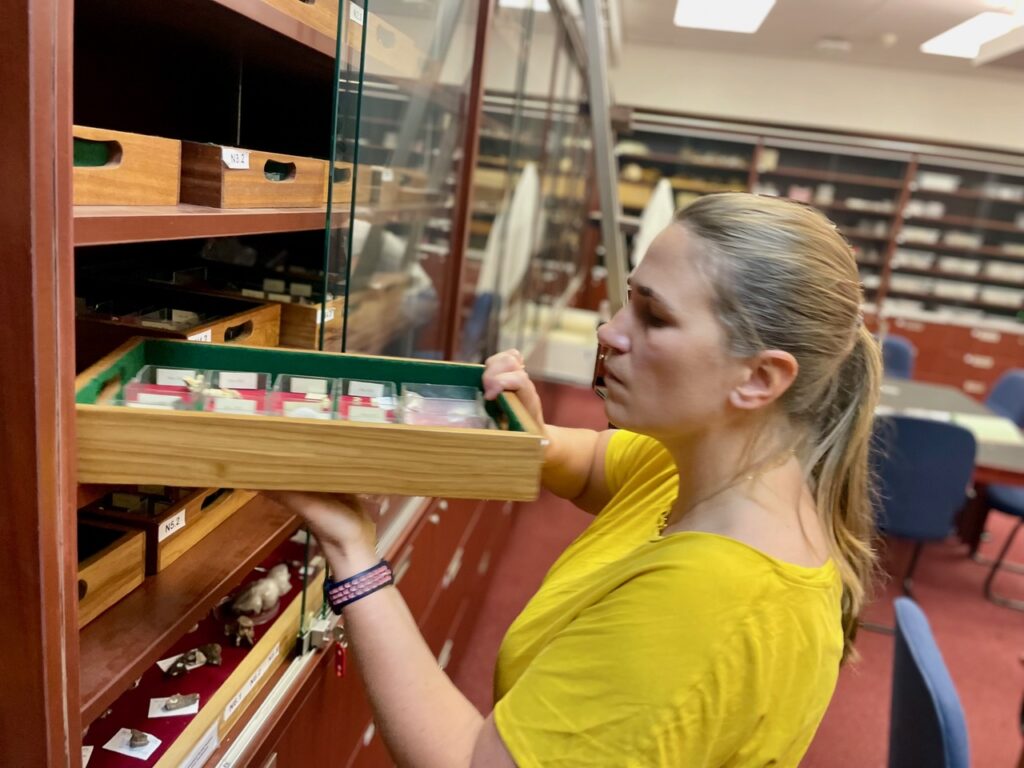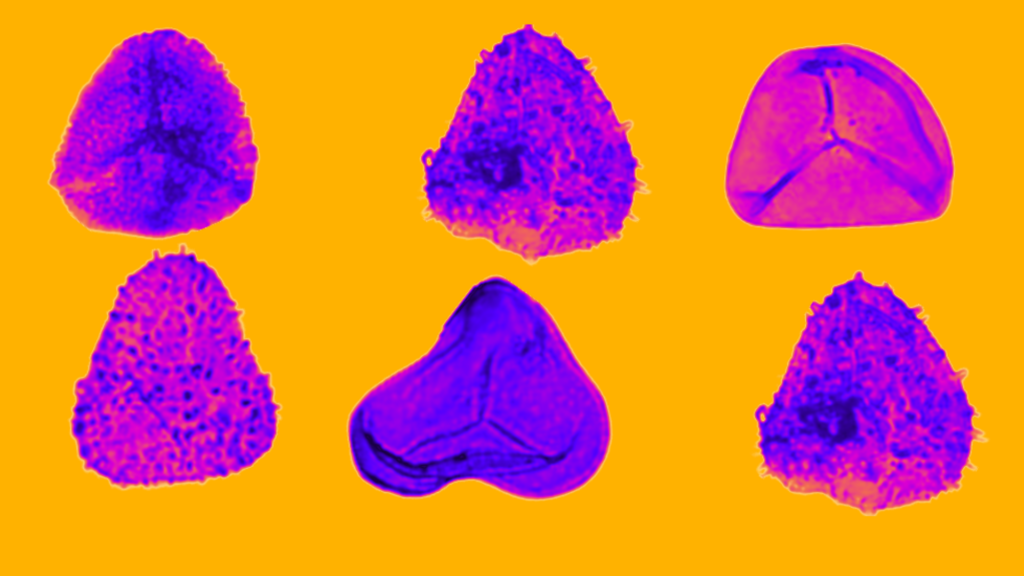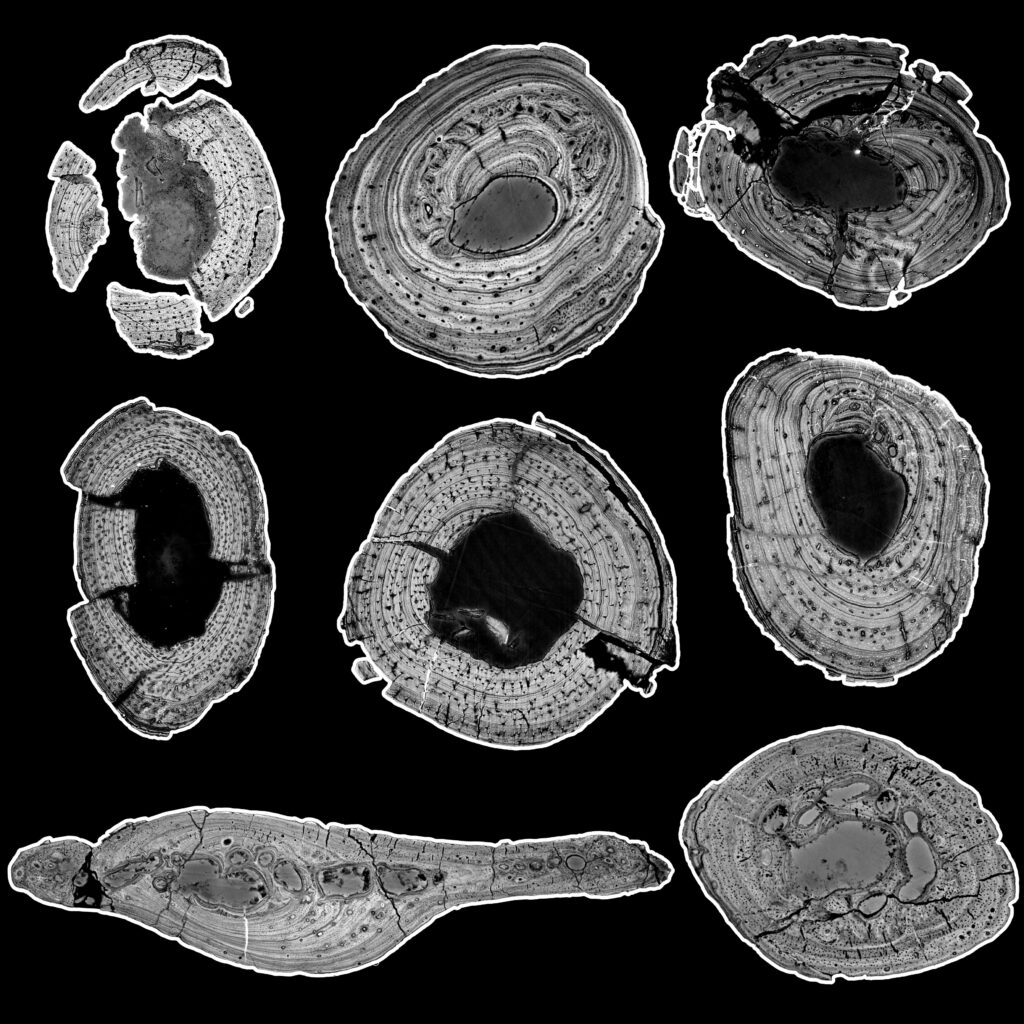A Small Bone with Big Implications

A section of the dinosaur bone showing lines of arrested growth and engorged fiber system, which refers to a specific type of bone tissue seen in cross-polarized light microscopy. Image © Chapelle et al 2023
Introducing the Smallest Adult Jurassic Sauropodomorph from South Africa
Colossal sauropodomorph dinosaurs weighing 70 tonnes once roamed the Earth as the largest land-dwelling vertebrates. However, recent research titled “Osteohistology reveals the smallest adult Jurassic sauropodomorph” published in Royal Society Open Science reveals that these giants had relatives humbly weighing only 75 kilograms, increasing the known diversity of Early Jurassic sauropodomorphs.
This discovery was made by Dr Kimberley Chapelle, Prof Jennifer Botha and Prof Jonah Choiniere from the Evolutionary Studies Institute at the University of the Witwatersrand, whilst studying a small upper-arm bone labelled BP/1/4732, collected from the eastern Free State of South Africa. Originally thought to belong to a juvenile Massospondylus carinatus, further analysis of the internal bone structures revealed that the humerus belonged to an adult individual from a new species of dinosaur that probably didn’t weigh more than the average human being.
According to Dr Kimberley “Kimi” Chapelle, the lead author of the study, the fossil indicates that the ancestors of sauropods and their close relatives, called sauropodomorphs, had greater diversity than previously thought, although there is currently insufficient evidence to assign a new species name.
“Until now, we were unaware that early sauropodomorphs could reach such small sizes during the Jurassic period, so the smallest skeletons were assumed to belong to juvenile individuals,” she says.
Kimi is excited about the future research opportunities this finding unlocks. “We can now reassess these skeletons discovered in southern Africa and hopefully find a more complete individual from which we can name a new species,” she says.

Diagram highlighting the humerus (upper arm bone – in orange) of the yet undescribed sauropodomorph that was analysed in this study. Diagram of Massospondylus carinatus adapted from Dr Scott Hartman’s Skeletal Drawings.com
Humble Beginnings:
During the Carnian period (233–231 Mya), the early sauropodomorphs, despite their small size (less than 15 kilograms), played a crucial role in the initial stages of dinosaur evolution. However, as time progressed into the Hettangian period, the remarkable group known as early branching sauropodomorphs (EBSMs) evolved a diverse range of body sizes, postures, and ecological adaptations. Within this group, some individuals were nimble and compact, while others grew to enormous proportions exceeding 10 tonnes.
One distinguishing feature of these EBSMs was their unique anatomy. They possessed elongated necks and tails, along with small heads and shortened forelimbs relative to their hind limbs. This structural arrangement allowed many of them to walk on two legs, granting them agility and the ability to reach a variety of plants to eat. As sauropodomorphs continued to evolve and increase in size, they gradually transitioned to a quadrupedal stance. This shift to walking on all fours coincided with the development of larger body sizes, elongated necks, and more substantial tails.

The new species of sauropodomorph (in yellow) would have been less than a metre long, and much smaller than its relatives (e.g., Massospondylus in blue or Brachiosaurus in orange). Based on an image by © Scott Hartman and Andrew Knight.
Unlocking the Jurassic Secrets:
The fossilised humerus was initially discovered in 1978 in South Africa, within rock formations dating back to the Lower Jurassic period, approximately 201 to 174 million years ago. The location where it was found is part of the Massospondylus Assemblage Zone, named after the dinosaur fossils commonly found there. To understand the lower thresholds of body mass in EBSMs, researchers examined the small, fossilised bone and compared it to a variety of other fossil bones.

Distribution map of the Massospondylus Assemblage Zone (MAZ) within South Africa and Lesotho shown in pink. Image © Viglietti et al 2022.
By comparing the size of the unknown arm bone to that of Massospondylus and other dinosaurs from the same time, it becomes evident that the unknown dinosaur was significantly smaller than any of them. In fact, this newly discovered fossil is likely the smallest sauropodomorph of its time, potentially measuring close to a meter in length as an adult. Although limited information can be derived from the arm bone alone, its shape indicates that the unidentified dinosaur probably walked on two legs, like its larger relatives.
Previously, the high abundance of these dinosaurs was attributed to the aftermath of the Triassic-Jurassic mass extinction event, one of the largest extinctions in history. It was believed that, with many of the competitors wiped out, these surviving dinosaurs were able to thrive and dominate the Early Jurassic ecosystems in the region that is now South Africa.
However, the new research has cast doubt on this hypothesis. A few years ago, the authors of the current study were part of a team that realised not all Massospondylus fossils were what they initially seemed to be. This discovery has prompted a re-evaluation of the prevailing understanding and highlights the need for a more comprehensive examination of these fossils to unravel the true diversity and ecological dynamics of the Early Jurassic ecosystems in South Africa.

The structure of the bone, similar to the growth rings observed in trees, indicates that the dinosaur had reached its full adult size when it died. Image © Chapelle et al 2023
Implications of the Discovery:
The discovery of this small-bodied sauropodomorph challenges the prevailing hypotheses about body size and competition in sauropodomorphs.
“Small ornithischian dinosaurs like Lesothosaurus first appear in southern Africa during the early Jurassic, and some scientists suggest they might have outcompeted early sauropodomorphs,” Kimi says.
“I think this is unlikely, as many similarly sized mammals share similar niches today. Instead, it’s possible that sauropodomorphs lost the ability to stay this small as part of the evolution of large size, but we just don’t know,” she says.
The story of sauropodomorphs continues to surprise us with their remarkable size diversity. The emergence of smaller-bodied EBSMs alongside their massive relatives provides new insights into their evolutionary journey; sauropodomorphs showcase remarkable adaptations that occurred over time, enabling them to thrive in various environments and exploit different food sources. From their humble beginnings, they ultimately evolved into the iconic giants of the dinosaur world. The discovery of BP/1/4732, the smallest known sauropodomorph from the Jurassic period, serves as a testament to the complex and intriguing nature of dinosaur evolution. Further research will undoubtedly unveil more secrets about the fascinating world of these ancient giants!





